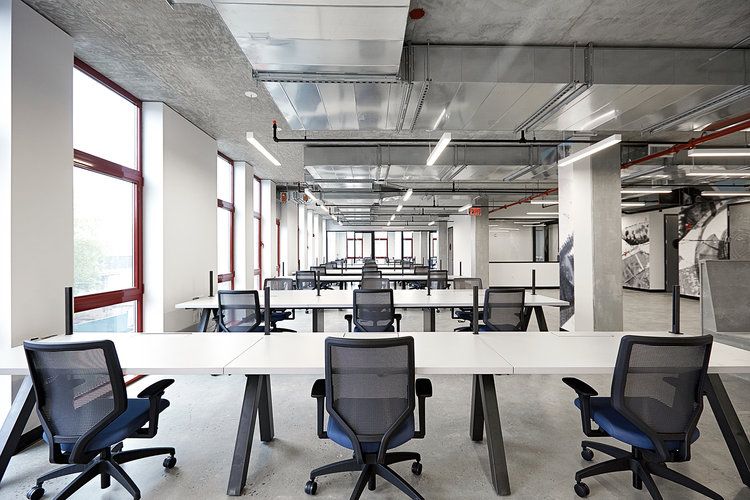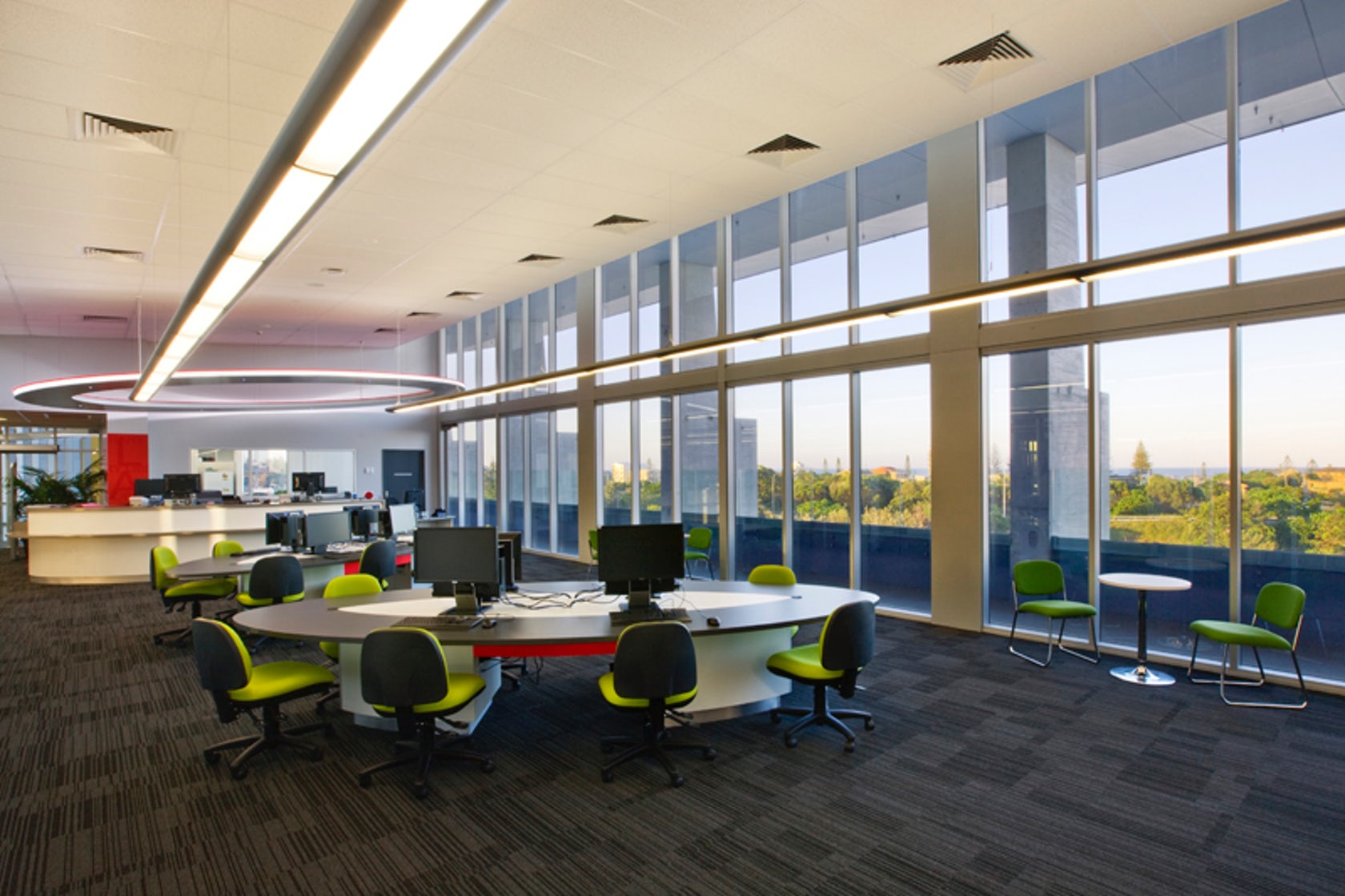
Every day, millions of employees occupy office buildings throughout the globe for hours at a time. So, the safety of workers in these buildings is a major priority for building managers, designers, and the businesses that use them. Proper office ventilation is a critical component of this.
Ventilation is the deliberate introduction of clean or fresh air (typically outside air) into a room while removing stale air (unclean, polluted, or stagnant air). Also, workplaces must be adequately vented to ensure sound health and safety for workers.
What are the effects of poor ventilation in offices?
When implementing appropriate management measures to reduce the risk of transmission as part of making your workplace COVID-secure, you should consider ventilation. Good airflow lowers the density of the virus in the air. Similarly, lowering the risks of airborne transmission. So the ventilation, on the other hand, may have little or no effect on contact transmission pathways.
In addition, harmful workplace ventilation systems produce an environment in which limited air circulation leads to the build-up of polluted air. As a result, exposing employees to potentially dangerous circumstances for the length of their working day. Because this happens when workers breathe in microparticles (aerosols) in the air after a person infected with the virus stays in an enclosed workplace area. Among the issues that may arise due to inadequate office ventilation are:
- A rise in carbon dioxide levels
- Increasing legionella exposure
- Pollutants emitted as a result of off-gassing and emissions
- Mould
- Unpleasant humidity and temperature
- Chronic health problems, often known as sick building syndrome.
What is the effect of a good ventilation system on the health and safety of employees?
Workplace ventilation may have both sound and adverse effects on building occupants. That’s why a good ventilation system goes a long way in determining the overall performance of an employee at work. So, a good ventilation system can help:
- eliminate pollutants, germs, dampness, and unpleasant odors, including body odors, and may help to prevent the transmission of airborne viruses.
- manage airflow by offering a means of regulating air in and out of the building or workplace
- regulate humidity and minimize condensation, resulting in less mold development and wet conditions in the office or workplace
- lower temperatures to avoid a hot and stuffy work environment by creating a well-ventilated room or more relaxing and pleasant area for individuals to work.
On the other hand, poor ventilation may lead to possible health issues, resulting in reduced productivity and increased sickness absence. Also, a poor ventilation system on employees at work can result in:
- tiredness, sleepiness, and impaired concentration
- headaches
- dizziness
- respiratory infection, wheezing, coughing, and sneezing
- hypersensitive reactions and allergies
- irritable or dry throat, eyes, nose, and skin
How to Spot Potential Ventilation Issues
Suppose there is evidence that the ventilation systems are not functioning correctly, to mitigate this issue there are the following basic tests that may assist identify the source of the ventilation problems or give insight into the available indoor air quality:
- double-check the humidity and temperature conditions.
- Make sure the airflow is sufficient.
- Ensure that the airflow direction is sufficient.
- Make sure that the air distribution (airflow pattern) is sufficient.
- Check the ventilation system to ensure it is working correctly.
- Use an inspection checklist to identify any issues with indoor air quality.
- Enlist the services of a competent individual to maintain the ventilation systems or perform air sampling and then follow up on their suggestions.
Benefits of Good Office Ventilation
Everyone benefits from good ventilation in the workplace. Here are the top benefits of good ventilation and air quality at the workplace.
- Increase Employee Comfort. Nobody wants to work in an unpleasant atmosphere and shiver or sweat all day at a computer. In a pleasant setting, it is simpler to concentrate on the duties of the day. Of course, you don’t have to make your office building as comfortable as a spa, but even a primary degree of comfort may help boost morale and productivity.
- Minimize Sick Time. Some individuals may have eye discomfort, inflammation, and trouble breathing due to poor indoor air quality. It may also exacerbate specific pre-existing health issues. Poor ventilation is also linked to sick building syndrome, a condition in which workers or students report various symptoms while within a building but not when outside of it. That is why ventilation is critical.
- Maintain humidity. The capacity to regulate humidity is another advantage of excellent ventilation systems. ERVs may capture part of the moisture in humidified air, reducing the amount of energy needed to humidify new air. Also developing, Mold, mites, fungus, bacterial development, and viruses may be reduced by keeping humidity levels between 40% and 60%. This may help to avoid health issues and allergic responses.
Strategies for Improving Office Ventilation
Furthermore, One of the essential engineering controls in the workplace is ventilation, and adequate ventilation may save energy while improving indoor air quality to achieve this goal. So, here we have some strategies for enhancing a good office ventilation
- Always check your HVAC system. Maintaining good air quality in a facility requires preventive maintenance because it begins with evaluating the HVAC system to ensure operationally sound. Therefore is particularly essential if it has been inactive for some time.
- Clean the air ducts. Another strategy is to clean air ducts and disinfection; a disinfectant may be put in the ducts to cover their surface. In addition to eliminating dirt from the vents, this therapy may sterilize them.
- Keep your air filter clean. The importance of air filtration in public spaces cannot be overstated. Filters are a simple method to help clean indoor air since they catch pollutants that would otherwise pass through vents, ducts, and buildings. Many components of air handling systems are affected because of the performance of air filters. Perhaps the most important element is the fan as a variation of the filter resistance during its life causes a tendency for the airflow to reduce. Filters may be helpful:
- in removing polluting particles from the air
- Also, in minimizing energy usage by reducing dirt accumulation on heat transmission equipment.
- to maintain system design airflows and aerodynamic performance also by reducing dirt build-up.
- similarly by maintaining the precision of the response control system components.
Standard office buildings should incorporate at least EU3 filters in the recirculated air path and EU4 for outside fresh air. You can find furthermore information in Australian standard AS 1324.1-2001.

Minimum effective office ventilation airflow
The table from AS 1668.2-2012 shows the minimum effective ventilation airflow for offices.
| Offices | Net floor area per person (Note 1m 2) |
Minimum outdoor airflow rate | |
| Quantity | Unit | ||
| Art rooms
Board rooms Committee rooms Computer rooms Conference rooms Drafting rooms Office areas Waiting areas |
51
1 25 1 5 11 2 |
1010
*10 =10 =10 10 -10 *10 |
L/S. personL/S. person
L/S. person /L/S. person =L/S. person *L/S]. person :L/S. person .L/S. person |
Conclusion
Finally, promoting best practices for office ventilation. Confirm that the HVAC system is also used as planned and adequately maintained. Monitor any potentially polluting operations, so you are able to ensure that furniture placement does not obstruct the air supply. In addition, A little effort goes a long way toward satisfying office ventilation standards and operating a cleaner, healthier office.













